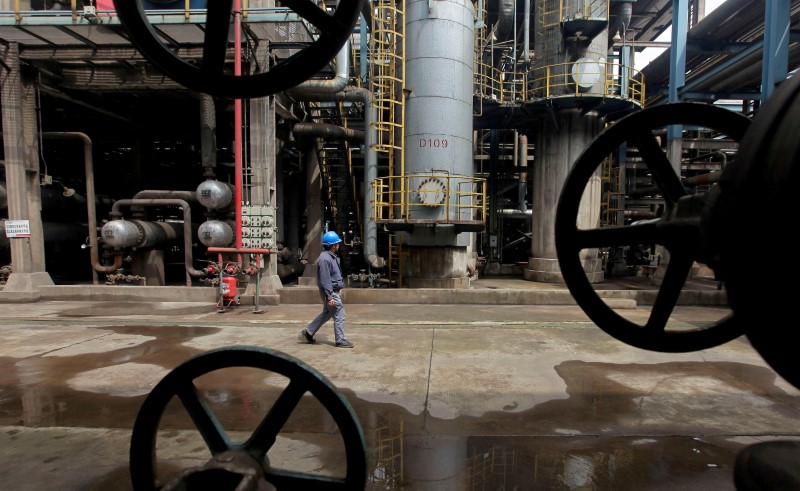(Bloomberg) -- The U.S. oil futures curve is showing signs of strain and may soften further in the coming weeks with Asian refiners’ appetite for American barrels diminishing.
The spread between West Texas Intermediate crude for nearest delivery and its second-month contract is trading in the deepest contango -- a bearish market structure indicating oversupply --since January. The weakness is threatening to spread to the next few contracts along the curve. American drillers are pumping at normal levels again following last month’s deep freeze, with no outlet for their supply.
Refiners in Asia, America’s largest buyer of domestic crude, will start planned work at crude processing plants next month. This along with high stockpiles in China will reduce the Far East’s intake of oil. Meanwhile, some U.S. Gulf Coast refineries are still recovering from February’s arctic blast. The lack of demand, both local and abroad, along with a pick-up in shale drilling activity since the freeze in February has led U.S. crude inventories to pile up by nearly 40 million barrels over the last three weeks to the highest since late last year.
Crude in the U.S. Gulf Coast “has no place to go, so it’s reflecting in the spread,” said Bob Yawger, head of the futures division at Mizuho Securities. “Export numbers have been bad.”
U.S. crude exports are hovering below 3 million barrels a day since mid-February. In addition to the lack of consumption from Asian refiners, foreign buyers of U.S. crude have also limited their intake because Permian Basin crude prices in Houston are not at a deep enough discount to global benchmark Brent to offset transportation costs estimated as high as $2 a barrel.
WTI in Houston is trading at about a $2.27 a barrel discount to Brent on Monday.
Stockpiles in the U.S. may grow further -- and impact the oil curve -- with headline futures prices managing to hold above $65 a barrel after rallying about 34% so far this year. A fast ramp-up in forward WTI prices could trigger a larger round of hedging and eventually drilling activity, Bank of America (NYSE:BAC) Global Research said in a report dated March 12. Shale production in the Permian Basin is set to grow a modest 11,000 barrels a day to 4.292 million in April, according to a U.S. government report.
(Updates with government production esimtates in the final paragraph.)
©2021 Bloomberg L.P.
